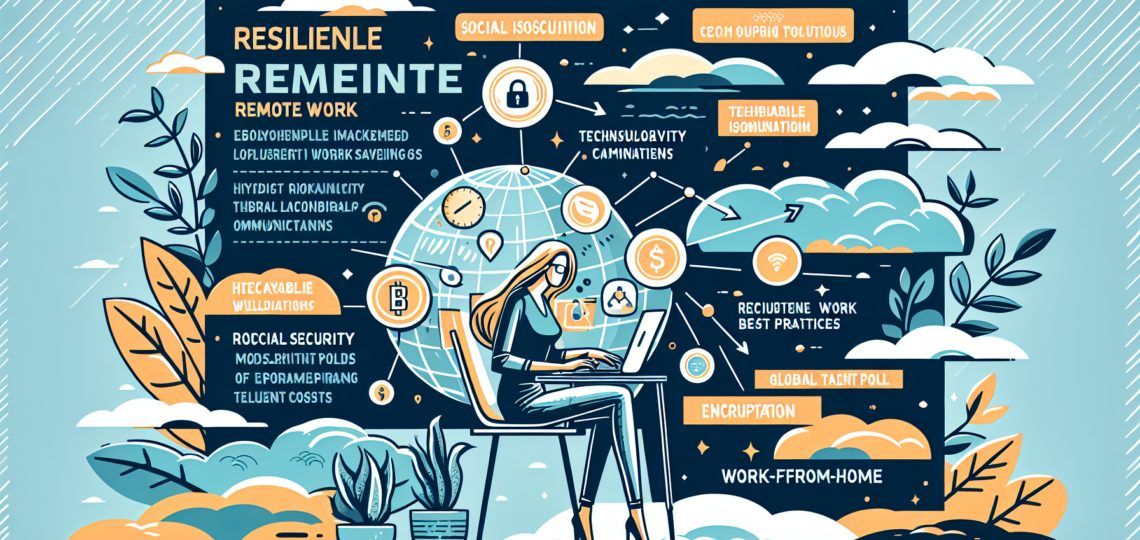
Resilient Remote Work: Overcoming Scrutiny with Emotional and Strategic Advantages
The article discusses how remote work practices will face new scrutiny but still retain their benefits. Remote work has become a staple in modern employment, offering advantages such as increased flexibility, productivity, and cost savings for both employees and employers. Despite challenges like cybersecurity risks and social isolation, remote work continues to evolve with technological advancements and hybrid models that combine remote and in-office experiences. As companies adapt to these changes, they must prioritize transparent communication, employee well-being, and robust security measures to ensure successful remote work environments.
这篇文章讨论了远程工作实践将面临新的审查,但仍然保留其优点。远程工作已经成为现代就业的重要组成部分,提供了诸如增加灵活性、提高生产力和降低成本等优势,惠及员工和雇主。尽管存在诸如网络安全风险和社交孤立等挑战,远程工作仍在不断演变,采用技术进步和混合模式,将远程工作与办公室工作相结合。随着公司适应这些变化,他们必须优先考虑透明的沟通、员工福祉以及健全的安全措施,以确保远程工作环境的成功。
—
Remote Work Practices Under Scrutiny: Balancing Benefits and Challenges
Remote work has revolutionized the way we approach employment, offering numerous benefits such as flexible work options, boosted productivity, and significant cost savings. As discussed in recent trends, remote work is no longer a temporary solution but a strategic asset for businesses, allowing them to access a broader talent pool and reduce operational costs. However, it also faces new scrutiny due to challenges like cybersecurity threats and social isolation.
Benefits of Remote Work
– **Flexible Work Options**: Remote work allows employees to create their own schedules, enabling them to manage personal responsibilities more effectively. This flexibility is a top priority for job candidates, as noted in the 2022 Global Talent Trends report by LinkedIn. Employers benefit by retaining top performers and expanding their talent search globally.
– **Boosted Productivity**: Without office distractions, remote workers can focus better, leading to higher quality work and increased productivity. A survey by the Future Forum found that fully remote workers improved their focus and productivity significantly.
– **Cost Savings**: Both employees and employers save money. Employees reduce commuting costs, while employers save on office expenses and real estate. According to Global Workplace Analytics, companies can save over $11,000 per employee annually if they work from home half the time.
Challenges and Solutions
Despite these benefits, remote work faces challenges such as cybersecurity risks and social isolation. To address these, companies must implement robust security measures like VPNs and encryption, and foster a culture of trust through regular virtual interactions. For more on managing remote work securely, check out our Ultimate Guide to Remote Work. Additionally, companies can use digital tools to enhance collaboration and employee engagement, as discussed in Remote Work Trends for 2025.
For those interested in the broader implications of remote work on business operations, visit 10 Remote Work Benefits and Best Practices in 2025. External resources like Global Workplace Analytics provide valuable insights into the economic benefits of remote work.
Related Resources
Meta Description: Explore how remote work practices face new scrutiny while retaining benefits like flexibility and productivity. Learn strategies to overcome challenges and optimize remote work environments.
Remote Work Practices Will Face New Scrutiny, But the Benefits Remain
#Remote Work, #Flexible Work Options, #Productivity, #Cost Savings, #Cybersecurity Risks, #Social Isolation, #Hybrid Models, #Technological Advancements, #Transparent Communication, #Employee Well-being, #Robust Security Measures, #VPNs, #Encryption, #Digital Collaboration Tools, #Employee Engagement, #Global Talent Pool, #Operational Costs, #Remote Work Trends, #Remote Work Best Practices, #Work-from-Home